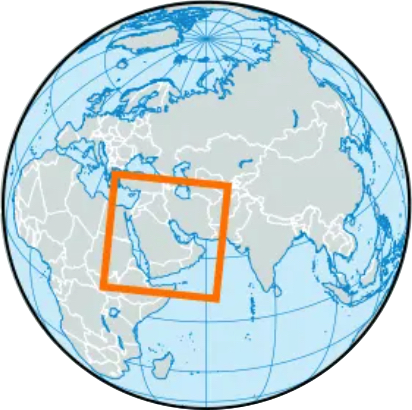 Coastal protection
Coastal protection
This goal determines the protection, relative to the past, provided by marine habitats against flooding and erosion to coastal areas.
Overview
Storm protection by coastal habitats saves lives, property and is worth billions of dollars each year.
Coral reefs, mangroves, seagrasses, salt marshes, kelp, and sea ice act as natural buffers against incoming waves to protect against the flooding and erosion of coastal areas that people value, whether inhabited (homes and other structures) or uninhabited (parks, special places, etc.). This goal assess the current protection provided by these habitats relative to some historic period.
Scores
The Coastal Protection score for the Red Sea and Gulf of Aden region was 74.
These scores suggest that key habitats are protecting coastal habitats, but the degree of protection has been somewhat compromised due to habitat loss.
The interactive map below shows the scores for the different countries.
Model description
This goal assesses the amount of protection provided by marine and coastal habitats by measuring the area they cover now relative to the area they covered in the recent past. The status of each habitat is calculated (see biodiversity/habitat goal) and their contribution to the total goal score is the average of the habitats weighted by the relative protection they provide.
| Habitat | Relative protection |
|---|---|
| mangroves | 4 |
| salt marshes | 4 |
| coral reefs | 3 |
| Seagrass | 1 |
| kelp | 1 |
A score of 100 would indicate that these habitats are all still intact or have been restored to the same condition as in the past. A score of 0 would indicate that these protective coastal habitats are completely absent.
A closer look at the data
The biggest factor driving scores, by far, is the current status component. Here, we take a closer look at the data underlying the status scores for each country with EEZ territory in the Red Sea and Gulf of Aden.
:::{callout-note collapse=TRUE}
Other components of an OHI score: Pressures, resilience, and trend
OHI scores are primarily driven by the current status dimension of the score, but pressures, resilience, and past trends are also important components of the goal score. In most cases, these variables will nudge the score a bit higher or lower than the current status score.
There are over 20 pressure variables (e.g., ocean warming, ocean acidification) and about 15 resilience variables (e.g., good governance and high gdp) used in the global assessment.
Each country gets a score for each pressure and resilience variable. For example, for each country we estimated the intensity of increase in ocean temperature, and rescaled these data to range from 0 to 1 (no pressure vs. highest pressure).
Each goal is affected by a subset of the pressure and resilience variables.
We provide a brief description of all the pressure and resilience variables along with how they affect each goal. A brief description of how these variables are incorporated into the final score is here. :::
Current status
Habitat condition
The status of this goal is based on the condition, area, and coastal protection provided by saltmarsh, seagrass, mangrove, coral, and kelp.
Habitat health is evaluated on a scale from 0 to 1, with 1 indicating the current condition is at, or better, than the reference point; trend is the average yearly change in health during the most recent 5 years; and extent is the estimated area of the habitat in each region in km2.
Implications
Based on the current model, this goal would be most improved by:
- improving mangrove condition, particularly in Somalia and Saudi Arabia
- improving condition of all protective habitats in Somalia
Future assessments should carefully assess the underlying data for improvements because typically better habitat data is available within each country, this allows for improved estimates of extent, condition, and trend.
Furthermore, future assessments should consider whether all relevant habitats are included in the model.
